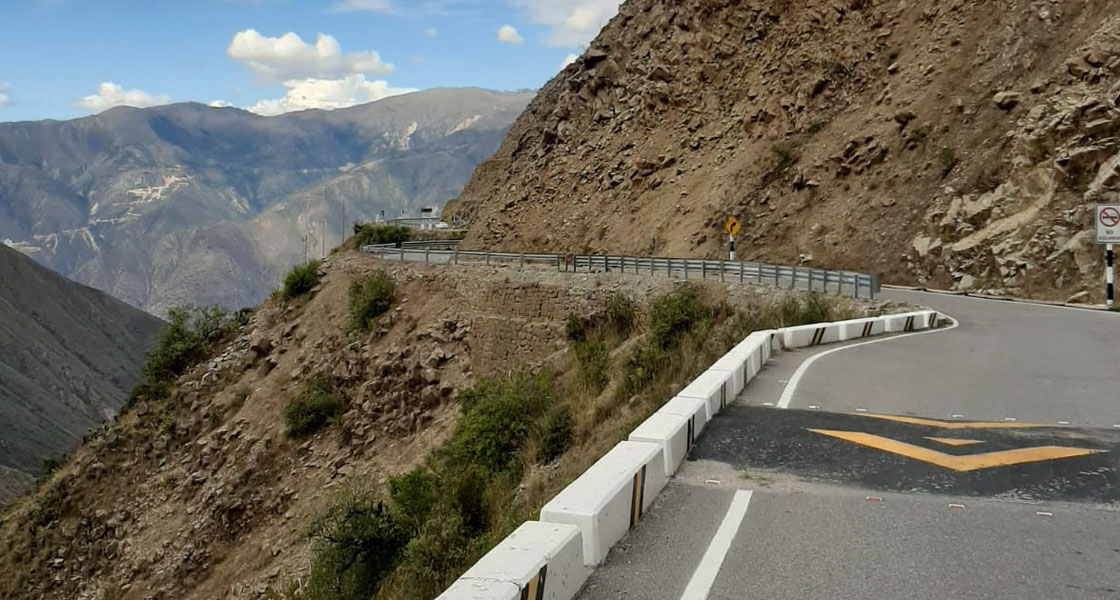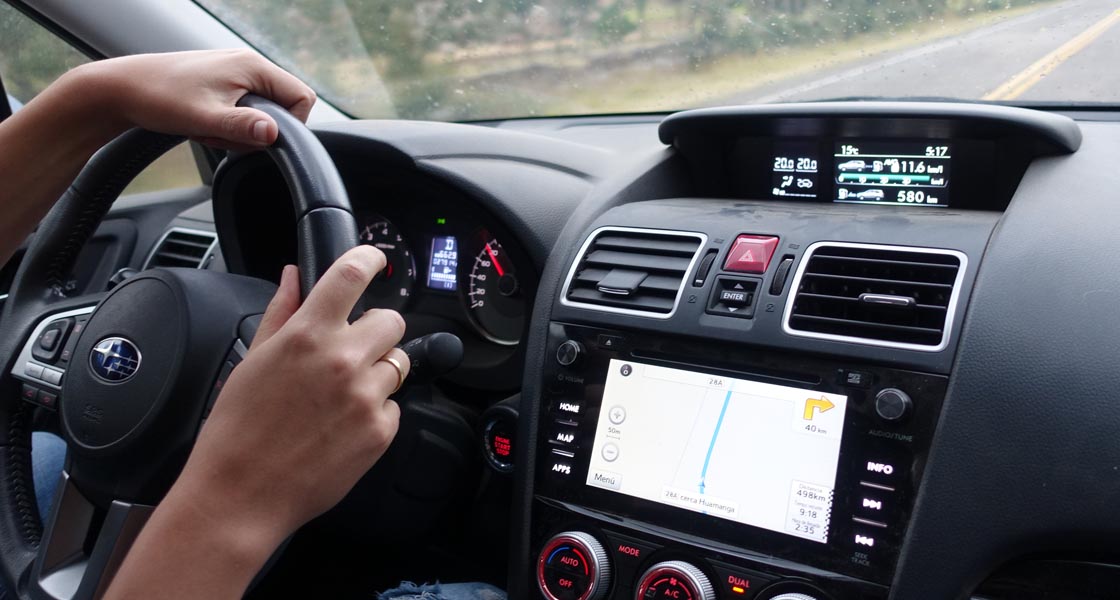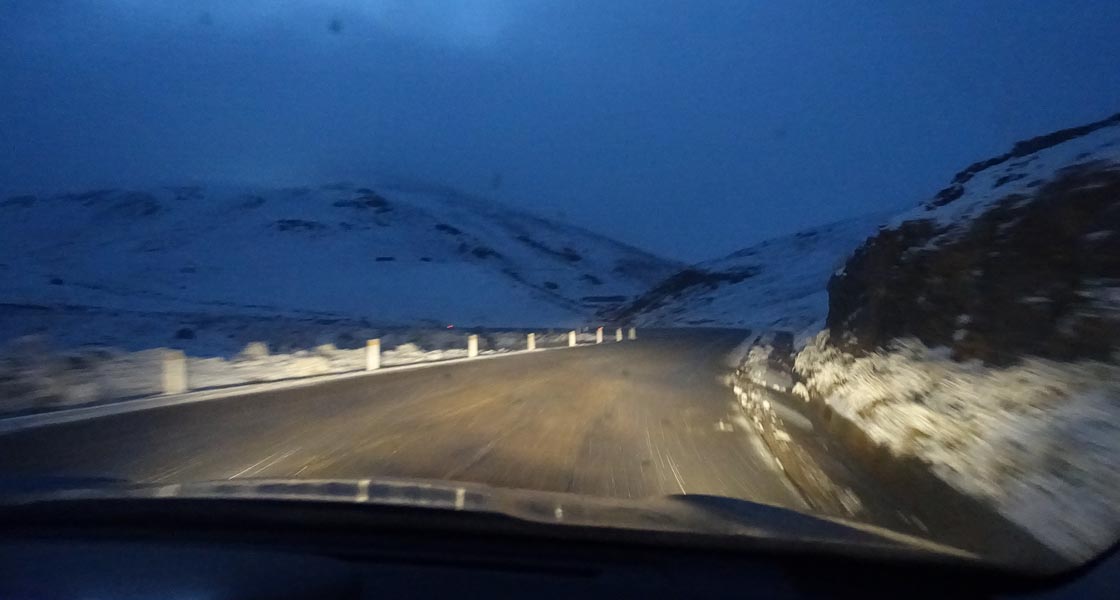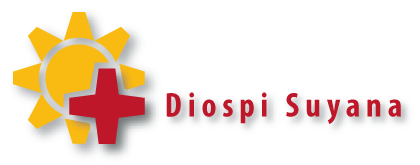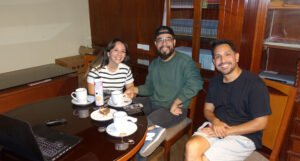
A twenty-hour journey through Peru with obstacles
It had all been planned so perfectly: leave Curahuasi at 4a.m. in the morning, arrive in Lima at 6p.m. at dusk. Before I start the ignition Head of Administration Steven de Jager says a prayer. Amen, and I push down the accelerator. Our journey comes to an abrupt end four hours later: a landslide has left its mark. “Probably we will open one lane this afternoon,” remarks a policeman standing at the roadblock, “but tomorrow morning is more realistic!”
“Does a gravel track over the mountains exist?” we ask some locals. “No,” answers a restaurant owner, “but can I offer you some delicious fish!” What an offer to reject, but we have to since we are in a hurry! Steven and I decide to take a different route through the Andes: Andahuaylas, Chincheros, Ayacucho, but this will add two hours to our total journey time.
While we stop for a quick pee I mistrustfully look at the rear right tyre. The wheels are new and their profile could have come directly out of a catalogue, but the rear tyre seems to have lost some air. So, instead of taking the turning to Andahuaylas we head back to Abancay and look for a tyre dealer. Furthermore, today most shops are closed due to Corona. We go from one address to the next. At “El Trujillo” we are finally able to activate an unenthusiastic mechanic. The water bath quickly finds the corpus delicti: a long nail. So we have to take off the tyre, patch up the inner jacket and put the wheel back on. Unfortunately this intermezzo has cost us a further hour.
It is now time for elevenses and if Google-Maps is correct we still have 1,000km ahead of us. However, we won’t be speeding along German autobahns, but making our way along mountainous roads with so many bends that even an A-Level student could not count them. But hey, there are two of us and we have a mission to accomplish.
The scenery is breath-taking. We hardly see any cars on the road and pass the time with lively conversation. The part of the journey from Chincheros to Ayacucho takes two hours longer than planned. The military interview us at a border between two Peruvian states. “You will make it to Ayacucho tonight and will arrive in Lima earliest tomorrow!”. The soldier obviously has not heard of North-European determination before. A Dutchman and a German don’t throw in the towel that quickly! At 5p.m. we leave Ayacucho and continue our journey north-westwards.
“You need at least 8 hours to Lima from here,” says a man at the petrol station. Our satnav says we will arrive in Lima at 2:30a.m. Steven has a thermos flask full of coffee and I am an old baker’s son. We decide to try our luck.
Every hour the road seems to bring us to a higher altitude. The landscape around us flooded by moonlight reminds me of an Alpine ski-resort and the temperature drops to freezing. At some point we say a second prayer. We have made 600 of the 1,100 kilometres. The clock is ticking against us and we make a quick change of driver.
At the military checkpoints we show our documents signed by the head of police and a governor. During the national state of emergencythese documents are worth their weight in pure gold. “We are from the Hospital Diospi Suyana in Curahuasi!“ Even in the neighbouring states that we drive through this statement convinces everyone. “Safe journey!” All the military and every policeman we encounter appear rather friendly today.
At a snail’s pace we crawl over the mountain passes. Whatever you do, don’t have an accident, not here in this secluded part of Peru. Steven describes in mouth-watering terms what sort of a meal he is going to eat upon arrival at the guest house. I, on the other hand, prefer to think of a warm bed.
The temperature rises as we overcome a further cordillera and head down into the valley. We are getting closer to Pisco and the coastal plain. The clock shows 10p.m., the thermometer 23°C. Only two and a half hours of motorway to Lima separate Steven from the dinner menu he was dreaming about.
I am driving again. Continuing straight on. In theory it is pip squeak, if it were not for the increasing tiredness and the fear of objects on the road. The speedometer shows 100km/h or perhaps somewhat right of it. “What is that?” I start up. The dog in the beam of my headlights is not entitled to use the highway.
I tear the steering wheel to the left and the four-legged creature vanishes into my right-side shadow. Steven and I are as wide awake as never before.
“That was an amazing reflex!” are the Dutchman’s acknowledging words. I know it was much more God’s mega protection.
Only an hour left until we reach Lima. At 1:30a.m. we arrive at the guest house and the gates open as if by magic. Robert Blas, head of our base station, was expecting us and helps us to unload. And, what is more, supper is waiting for us on the table: noodles, potatoes and chicken. Steven’s dream has come true. So the 20.5 hours were worth it. Bon appetit!
A small news is posted on the website, a prayer of thanks and then one can hear deep breathing coming from two rooms./KDJ
P.S. The three respirators were released by Customs in Lima at 5p.m. yesterday. (Picture above taken from the Facebook page of Chalhuanca’s city hall). Today, our first Covid-19 patient was able to go home fully recovered.

